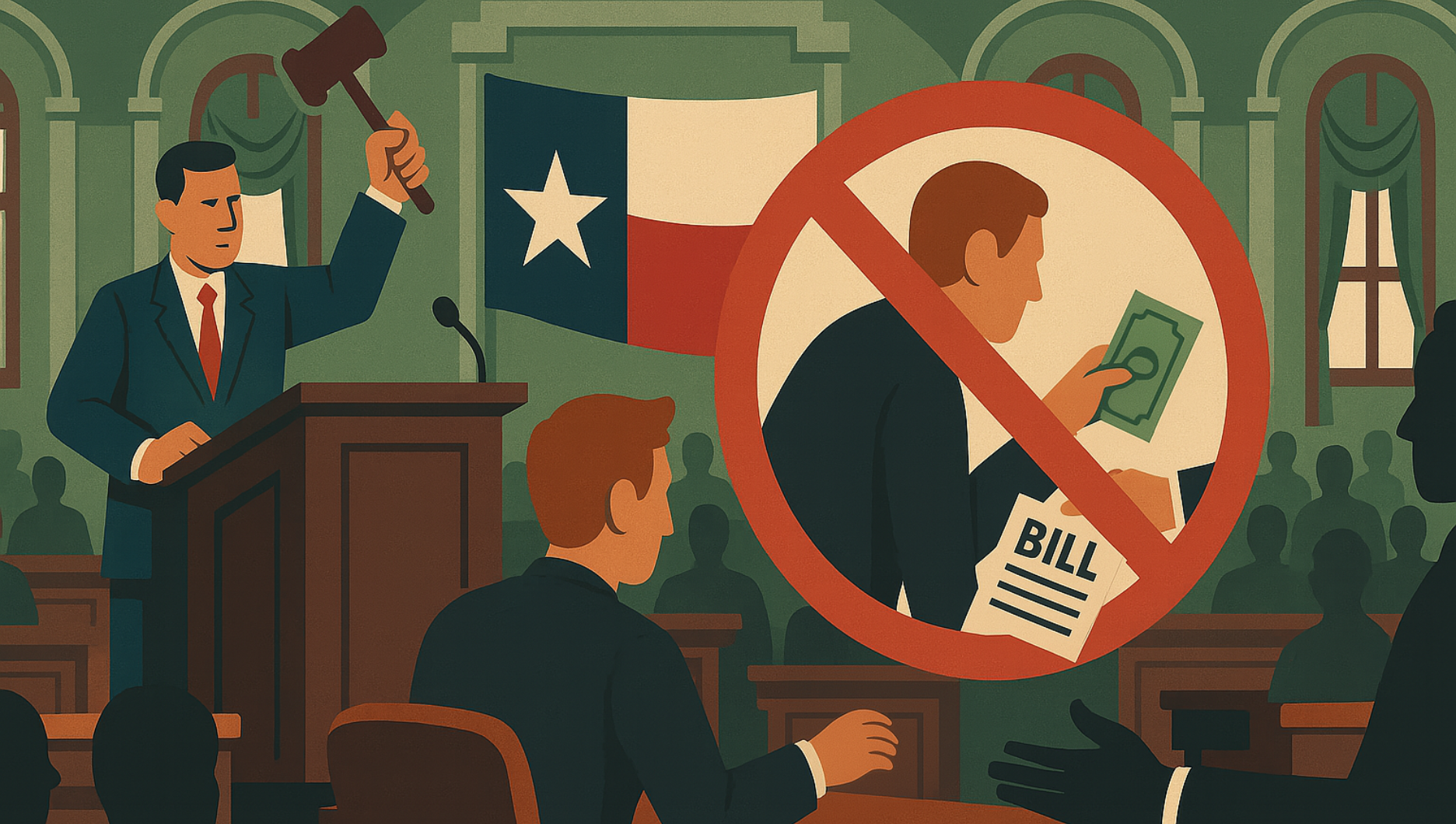Texas lawmakers often tout their commitment to limited government, but their excessive budget behavior tells another story.
In the current legislative session (ending June 2), they were handed a golden opportunity: a massive $24 billion surplus. They could have used it to provide meaningful property tax relief, pay down debt, or shrink the size of government. Instead, they are looking to approve a bloated $336 billion budget, packing billions into constitutionally and statutorily dedicated funds, many of which entirely evade the state’s constitutional spending limits. This tactic may be legal, but it undermines transparency, accountability, and other principles of fiscal conservatism.
Texas technically has a constitutional limit on state spending growth, tied to the rate of personal income growth. But here’s the catch: it only applies to non-constitutionally dedicated General Revenue funds, or less than half of the budget. That means when lawmakers allocate money to constitutionally dedicated funds, they spend beyond the cap without consequence. This loophole is now one of the primary tools for growing government while avoiding the appearance of breaking the law.
This session’s biggest constitutional workarounds include: the Texas Energy Fund, with $5 billion allocated to subsidize natural gas power plant development; the Texas Water Fund, with $2.5 billion earmarked for upgrading the state’s water infrastructure; the Texas Nuclear Fund, starting with $750 million and possibly rising to $2 billion for advanced nuclear energy ventures; the Texas University Fund, funded with $3.9 billion to support non-UT and non-A&M research institutions; the proposed $3 billion Dementia Prevention and Research Institute of Texas (DPRIT); and the State Highway Fund, which consistently receives billions in off-budget transfers.
Each of these funds was newly created or significantly expanded. All avoid the state’s spending cap. Together, they lock away billions of taxpayer dollars, shielded from performance evaluation or reallocation.
The Economic Stabilization Fund (ESF), commonly known as the Rainy Day Fund, was originally designed to serve as a financial buffer during economic downturns. But today, it’s routinely used to bankroll infrastructure, broadband, and long-term projects.
With the fund regularly hitting its 10% cap, any excess oil and gas severance tax revenues flow back to General Revenue and are rapidly spent. To prevent misuse, lawmakers should either lower the ESF cap or cut oil and gas severance taxes, letting Texans keep more of what they earn and shifting those dollars back into the productive private sector.
Many of these constitutionally dedicated funds serve politically connected interests. Billions go to universities, construction firms, and favored corporations with minimal legislative oversight. Because these funds are protected by state constitution or statute, they rarely face sunset reviews or performance evaluations.
The Texas Future Fund, being created under HB 104, is one of the worst offenders. It takes $5 billion from the rainy day fund and invests that taxpayer money into government-selected companies and technologies, effectively picking winners and losers. However, investment decisions belong in the competitive private sector, where entrepreneurs, not politicians, take risks and innovate. State-led investing distorts incentives, fosters cronyism, and insulates political beneficiaries from the discipline of the market. It also creates a dangerous wedge between taxpayers and their government, because this spending happens outside the normal appropriations process. HB 104 should be rejected.
Rather than growing a maze of constitutionally dedicated funds, the state should appropriate all spending through the base general funds budget, where priorities are debated, negotiated, and aligned with current needs. Permanent end-run constitutional accounts deprive taxpayers of real transparency and undermine the core function of representative budgeting.
This is inertia budgeting at its worst: political compromises today become tomorrow’s locked-in obligations, no matter how ineffective or outdated.
If Texas wants to restore fiscal sanity, lawmakers should pursue five key reforms: apply the constitutional spending cap to all state funds—not just General Revenue; tie spending growth to population growth plus inflation; require a two-thirds vote to exceed the cap; eliminate most constitutionally and statutorily dedicated funds; and abolish corporate welfare and crony earmarks that avoid oversight.
Texans earned the $24 billion surplus. They should have seen that money returned to them through lower property taxes, smaller government, and debt reduction. Instead, they’re getting budget tricks, spending shell games, and entrenched bureaucracies that expand without consequence. It’s time to close the loopholes, eliminate the gimmicks, and return control of the budget to the people who fund it—taxpayers, not special interests.
Texans for Fiscal Responsibility relies on the support of private donors across the Lone Star State in order to promote fiscal responsibility and pro-taxpayer government in Texas. Please consider supporting our efforts! Thank you!
Get The Fiscal Note, our free weekly roll-up on all the current events that could impact your wallet. Subscribe today!




